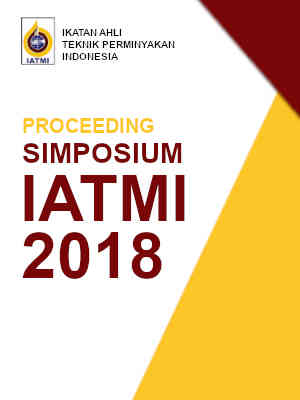Implementation of Comprehensive Solution to Minimize The Transportation Discrepancy in East Java Gas Pipeline
Keywords:
EJGP, Discrepancy, Shipper Stock, Calculated Gas Stock, MeteringAbstract
East Java Gas Pipeline (EJGP) is the Gas transmission pipeline network operated by Pertamina Gas, consist of 370 km offshore pipeline segment from Pagerungan to Porong, 70 km onshore gas pipeline from Porong to Gresik and 58 km onshore gas pipeline from Porong to Grati. The natural gas is delivered to some critical industries in East Java such as Fertilizer Plant (PKG), Power Plant (PJB, IP Grati), other industries & city gas.
EJGP is an open access pipeline system, means that this pipeline is able to accessed by many shippers. Pertamina Gas as transporter has arranged the terms and condition for accessing the EJGP Pipeline through Access Arrangement (AA) which is already approved by BPH Migas as the Indonesian Goverment regulator. In an open access system, there are some important parameters such as Shipper's stock, calculated gas stock (linepack), initial fill, and discrepancy. These parameters are developed in order to anticipate the confiousness of gas ownership of each shipper. In terms of Shipper's stock, there will be a deviation between supply and distribution compared with the calculated gas stock (linepack) calculation, called Discrepancy. This discrepancy has been set in the Access Arangement (AA) not exceeding the allowable limit of ± 0.85%.
Started from 2012, the discrepancy was exceed the allowable limit until March 2016 at about -1.11%. and based on AA, transporter have to make some efforts to minimize discrepancies as low as possible and less than allowable limit. Hence, since January 2016, Pertamina Gas has been conducting comprehensive improvements such as replacement of Equipments (Flow Computer, Gas Chromatograph, Transmitter), verification of Metering system, uniformity of upstream and downstream meter type, updating the Standard Operating Procedure, shyncronization of operation & maintenance procedures, annual validation and calibration procedures, and conducting performance test to analyze the effect of swing flow to discrepancy. One of the best improvement was the development of Operation Control Station (OCS) by implementing Online Stock Monitoring program to keep monitoring the balance of gas supply and distribution. As a result, comprehensive improvement has made the discrepancy between April 2016 until April 2018 decreased to -0.51%.



